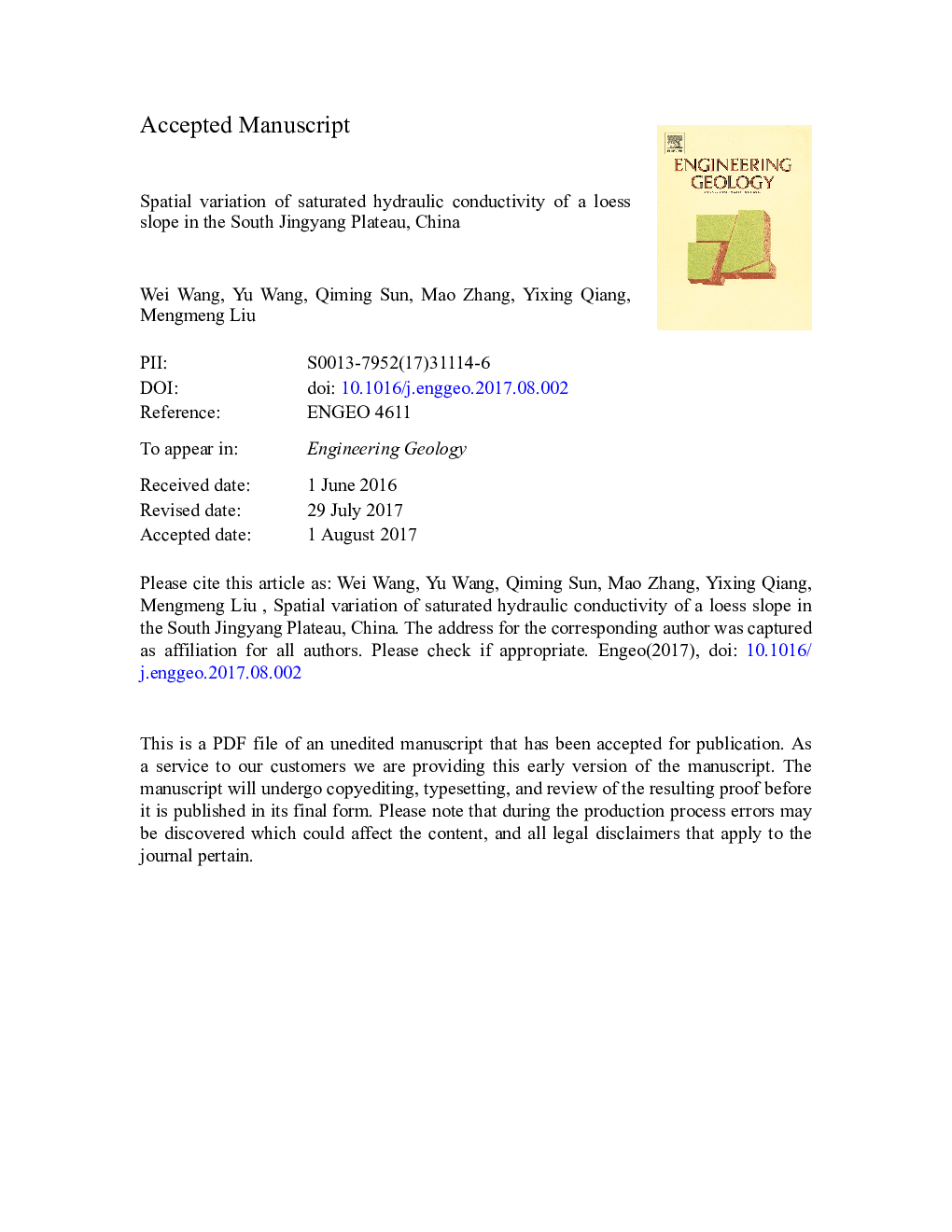| Article ID | Journal | Published Year | Pages | File Type |
|---|---|---|---|---|
| 8915936 | Engineering Geology | 2018 | 22 Pages |
Abstract
Water infiltration in loess soils is an important trigger causing landslides, in which the hydraulic conductivity of the loess plays an important role. By analyzing a soil trench and soil samples from the South Jingyang Plateau, northwest China, a loess slope was investigated. A horizontal adit in a Lishi loess layer was also analyzed. Using variable head permeability tests the saturated horizontal hydraulic conductivity (Kh) and saturated vertical hydraulic conductivity (Kv) of the loess samples were measured. Results showed that the majority of the Kh values are larger than the Kv values, indicating that the loess exhibits permeability anisotropy. Lilliefors test was used to determine the normality of the Kh and Kv results. Test results indicate that Kh and Kv measurements of the loess samples collected in the trench and adit all show log-normal distribution, while a number of the Kh and Kv values also reflect a normal distribution. Geo-statistical analysis shows that the spherical model and the Gaussian model provide the best fit variograms of Kh and Kv values along the trench; analysis along the adit indicated the opposite results. The variogram range values suggest that the spatial correlation of loess Kv is greater in the vertical direction in a horizontal plane, while the spatial correlation of Kh in the adit is greater than that in the vertical direction. Loess structure rather than randomness decides the spatial variation of Kh and Kv measurements (except for Kh variation along the adit which depends on both structural factor and randomness). Kh and Kv values of loess tend to decrease with depth; results which can be described by an exponential decay model.
Related Topics
Physical Sciences and Engineering
Earth and Planetary Sciences
Geotechnical Engineering and Engineering Geology
Authors
Wei Wang, Yu Wang, Qiming Sun, Mao Zhang, Yixing Qiang, Mengmeng Liu,
